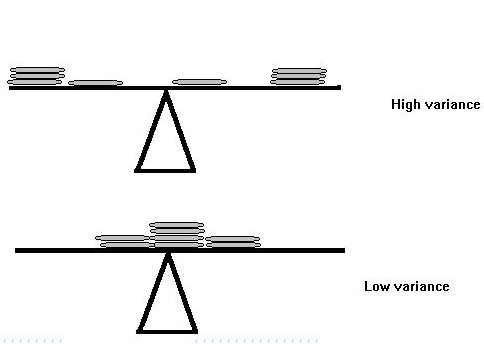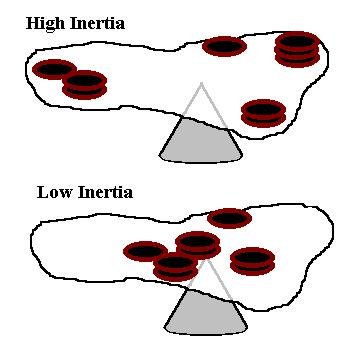Centroids and Inertia
It
is often difficult to think of data, graphs, and analyses to have anything to
do with physical space. But it turns out that there are a number of things that
physics and multivariate models have in common.
The centroid is the center of mass of a physical object. We can obtain this by taking the average location of the object, along three dimensions (conventionally, length, height, and width). If the object varies in density, we would need to take this variation into account.
A one-dimensional or two-dimensional object will balance perfectly if placed by its centroid on a fulcrum, or if it is suspended by its centroid.
An object, when thrown with a spin, will rotate around its centroid.
In ordination, the "centroid" is the (weighted) average location of something (usually a species or a category of samples) in ordination space, i.e. along all ordination axes simultaneously.
The inertia of an object is the tendency of an object at rest to stay at rest. The inertia of an object suspended from its centroid, or balanced on a fulcrum, is directly related to how widely dispersed the mass is away from its centroid.

In statistics, variance is a measure of how far away objects are from their centroid.
The same holds true for the more than one dimension (e.g. more than one
variable):

So the amount of inertia in a data set is a multivariate measure of the amount of variation in a data set. Note that there is no coordinate system shown above. The inertia is the same, no matter what direction the x axis is, and the y axis is (as long is x is perpendicular to y!).
In weighted averaging ordination methods, the inertia is related to the variance of species modes (or species scores), and not to the variance in abundance.
This
page was created and is maintained by Michael
Palmer.
 To the ordination web page
To the ordination web page